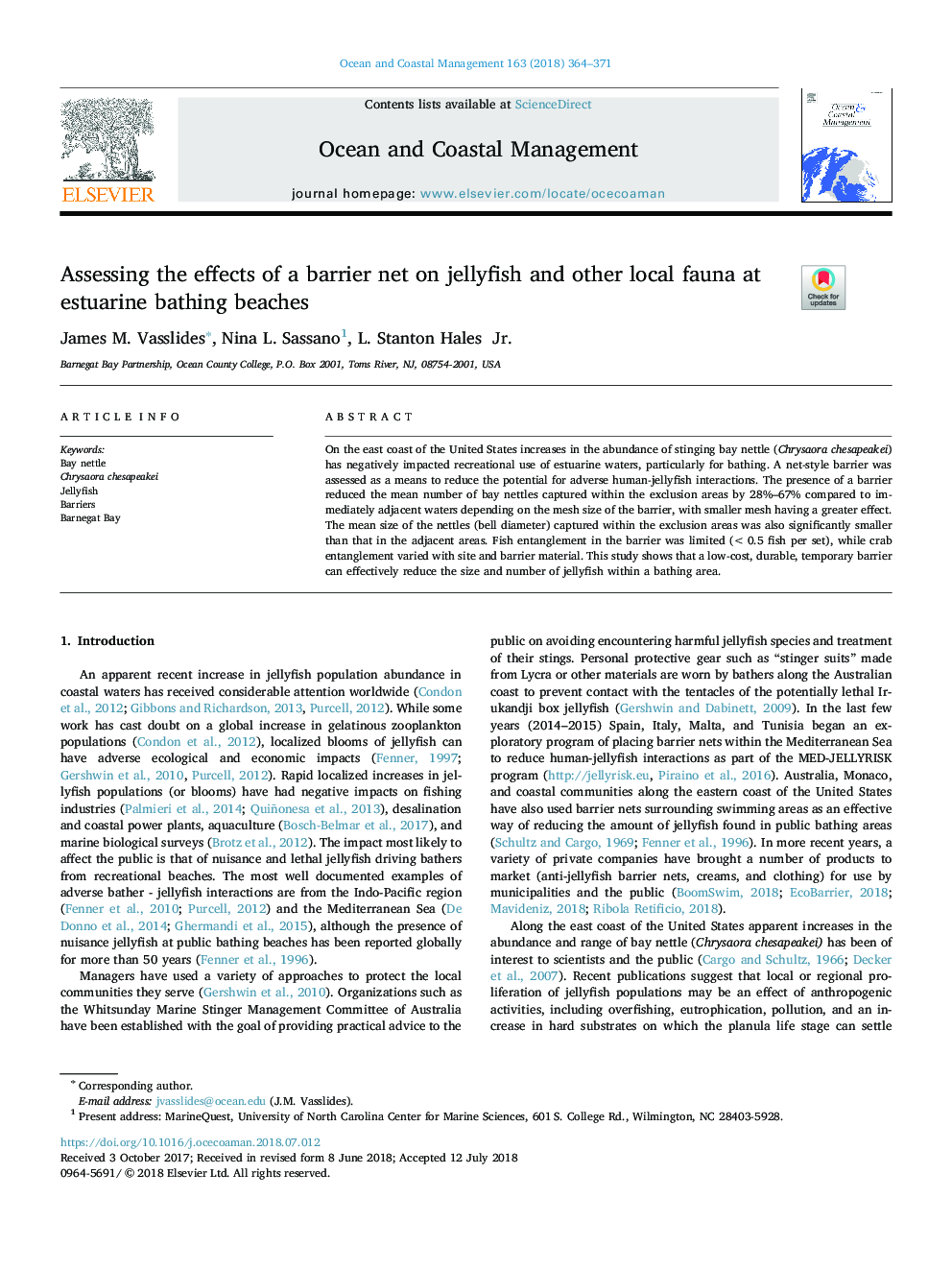| Article ID | Journal | Published Year | Pages | File Type |
|---|---|---|---|---|
| 8060551 | Ocean & Coastal Management | 2018 | 8 Pages |
Abstract
On the east coast of the United States increases in the abundance of stinging bay nettle (Chrysaora chesapeakei) has negatively impacted recreational use of estuarine waters, particularly for bathing. A net-style barrier was assessed as a means to reduce the potential for adverse human-jellyfish interactions. The presence of a barrier reduced the mean number of bay nettles captured within the exclusion areas by 28%-67% compared to immediately adjacent waters depending on the mesh size of the barrier, with smaller mesh having a greater effect. The mean size of the nettles (bell diameter) captured within the exclusion areas was also significantly smaller than that in the adjacent areas. Fish entanglement in the barrier was limited (<0.5 fish per set), while crab entanglement varied with site and barrier material. This study shows that a low-cost, durable, temporary barrier can effectively reduce the size and number of jellyfish within a bathing area.
Related Topics
Physical Sciences and Engineering
Earth and Planetary Sciences
Oceanography
Authors
James M. Vasslides, Nina L. Sassano, L. Stanton Jr.,
